Plan your Fujian Tour? Peitian Village is a place worth visiting in Fujian. The cluster of the ancient Ming and Qing buildings in the Peitian Village is one of the three kinds of vernacular Hakkak dwellings. The other two are Tulou (clay buildings) in Southwest Fujian and Weilong Wu (circled dragon houses) in Meizhou of east Guangdong.
The Peitian Village is located in Liancheng County of Longyan City in west Fujian. It is about 100km northeast of Longyan and 300km northeast of Xiamen. The Ming and Qing building complex has been well preserved with a history of over 800 years.
The ancient building cluster includes 30 magnificent houses, 21 ancestral halls, 6 academies of classical learning, 2 memorial archways, and a 1000- meter long ancient street paved with cobblestones.
All the grand buildings in Peitian Village are based on the structure of the “Nine Halls and Eighteen Patios”. “9 Halls” mean door hall, lower hall, middle hall, upper hall, downstairs hall, upstairs hall, back hall, left flower hall, and right flower hall. The 18 patios (courtyards) include 5 yards in the entrance halls, 10 yards in the crosswise houses and 3 yards in the back hall. Each building is decorated with reliefs, couplets and stone steles. It is a wonder in the culture and architecture radiating from the unique buildings built by the Hakka people, attracting tourists from all over the world each year.
The history of Peitian Village can be traced to the year 1344 when the Wu family clan immigrated from northen China here in Peitian. They toiled on the limited land and created a splendid Hakka culture and the Hakka house building structure surrounded by the mountains and a river. Today there are about 300 households with a population of 1400 in the village with the same surname “Wu”.
Peitian Village is more than just an ancient village teemed with Ming and Qing styled buildings, it is a beautiful manor, a water and mountain painting, a history book of Hakka people and Hakka culture. Peitian Village is listed as one of the 10 most idyllic villages in China, a key national level attraction.
We walked on the cobblestoned and slabs paved village road and entered the village through a stone archway flanked by the hill on the left and dense trees on the right, serving as a screen – a typical Chinese architecture.
The Stone Archway Entrance to Peitian Village
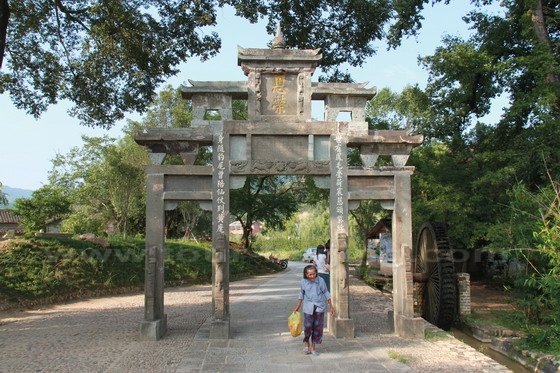
Now we entered the village, amazed by its tranquility and beauty.
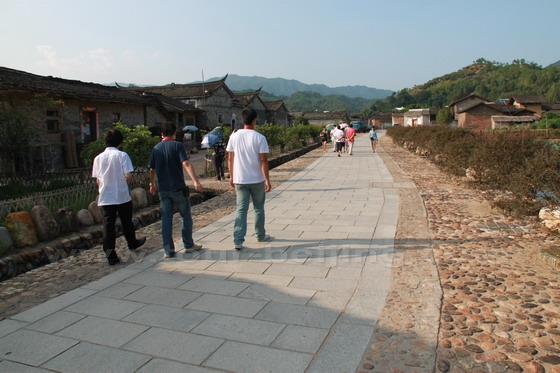
Hens were carefreely wandering in the yard by the village house.
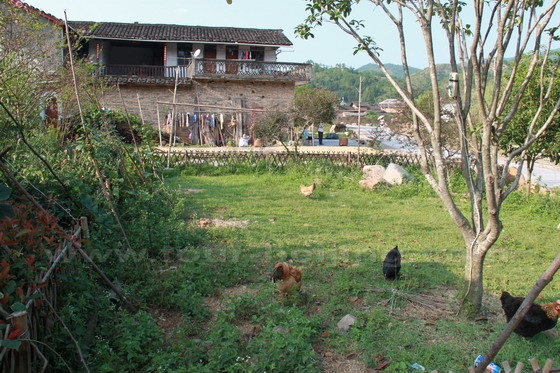
Little sign of commercialization, the local villager were simple, friendly.
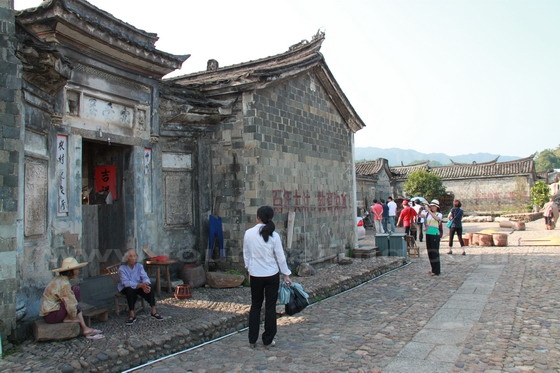
“Dafu Di” (Senior Officials Mansion)
We first visited the grand building “Dafu Di” (Senior Officials Mansion), also known as “Jishu Tang” ( Abode of Herutage). The huge complex was built in 1884 and completed in 1894, financed by 10 plus families. The complex occupies an area of 6,900 square meters, with 18 halls, 24 patios, and 108 rooms. This is the largest well-preserved residential complex in Peitian Village. The three-character inscription on the top of the inner gate shows the high status of the owner of the magnificent house.
Outer Gate of the grand building “Dafu Di” (Senior Officials Mansion), also known as “Jishu Tang” ( Abode of Heritage). The inscription on the top of the outer gate “The Three Terraces Forming Auspiciousness” (三台拱瑞) means “Three Stars shine intto the house”.
The three-character (大夫第) inscription on the top of the inner gate shows the high status of the owner of the magnificent house.
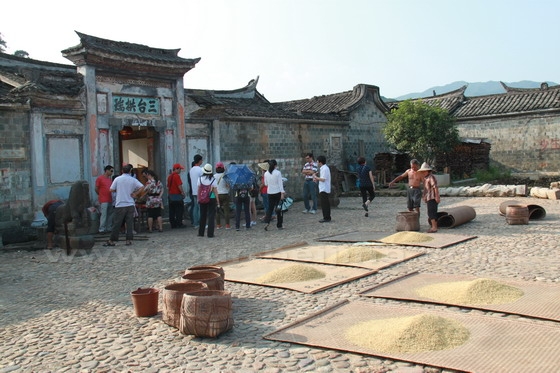
Inside the house are a number of merits plaque for successful candidates for imperial examinations and plaques for the titled offered by the imperial mandates, plaques for honorary messages.
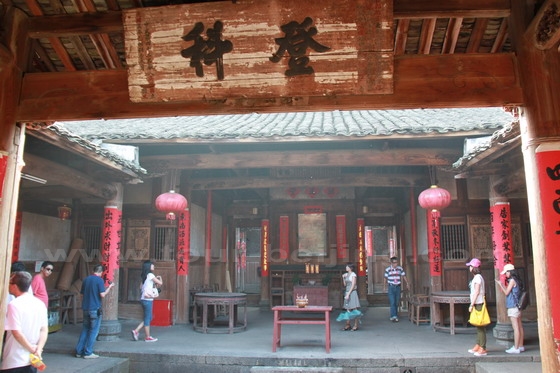
Wooden Carved Hand Carvings, reliefs, sculptures.
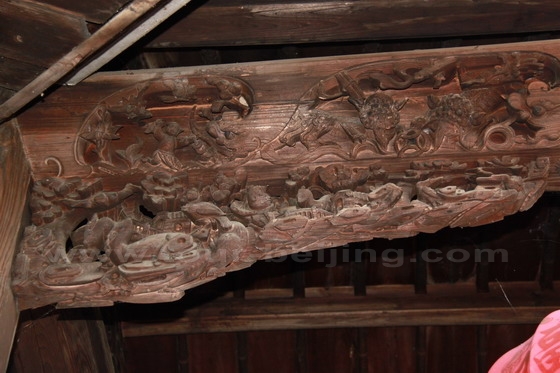
One Thousand Meter Cobblestone Road in the Village
The 1000 meter long cobblestone road winding in the village is flanked on the inner side by a number of ancestral halls. All the ancestral halls were elaborately built with upturned eves, elegant reliefs and sculptures. The ancient cobblestone paved road The water passing covertly under the cobblestone paved road.
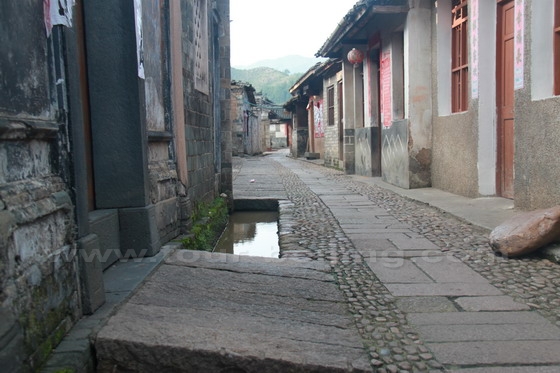
The two ancestral halls – Heng and Jin are adjacent to each other. They were built during the Kangxi and Qianlong respectively in Qing Dynasty. Inside the halls are gilded shrines for ancestors. The beams, arches, columns were elaborately engraved and painted. The Ancestral Hall for Revered Heng.
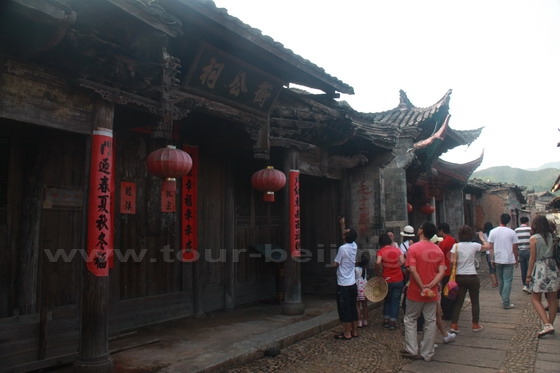
The Ancestral Hall for Revered Jin
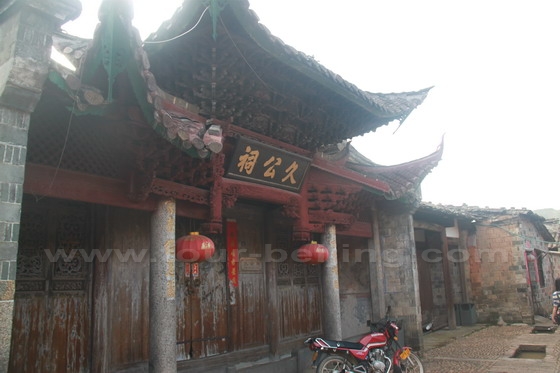
The House of “Jinshi Di” (Scholar’s Mansion)
The house of “Jinshi Di” is the former residence of Wu Bozheng, who was the senior imperial bodyguard in Qing Dynasty. In the lower hall hangs the golden horizontal inscription of “Jinshi”.
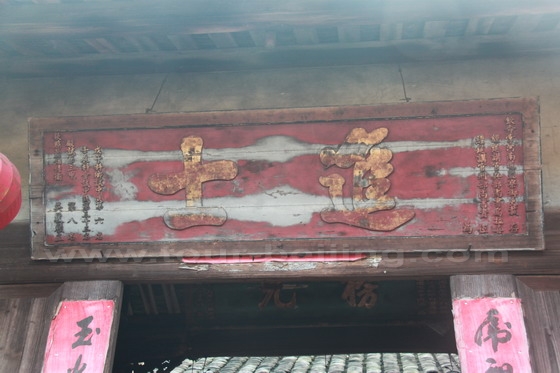
In the upper hall hangs the inscribed board of “Wuban Tang”
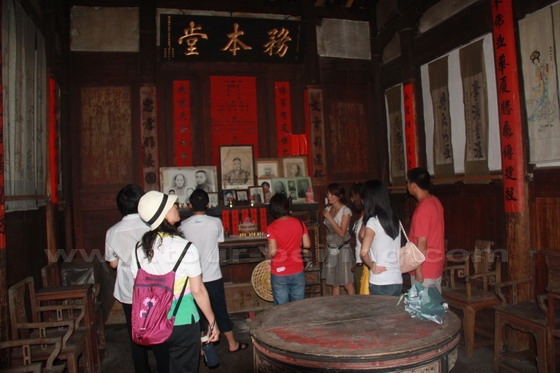
In the middle of the courtyard lies a big stone for exercising which weighs more than 150kg.
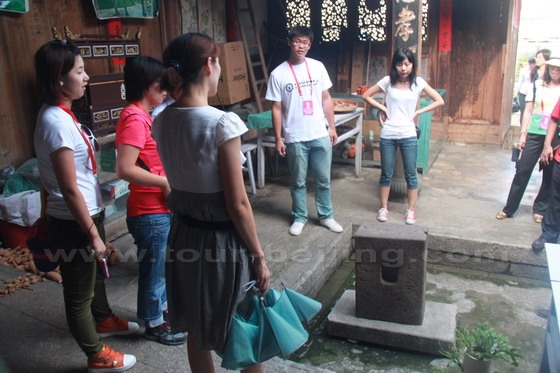
The engraved windows in the hall
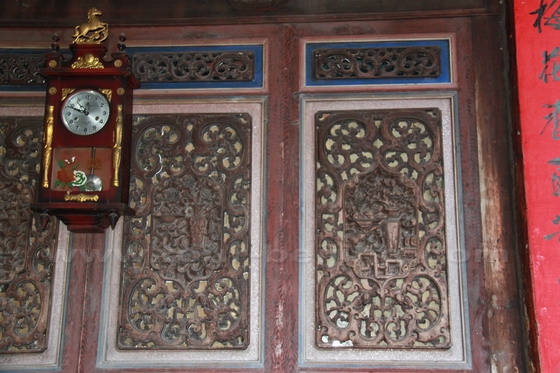
Stately Home of Reception (官厅)
Constructed in the period of Emperial Kangxi of the Qing Dynasty, the Stately Home of Recepetion is a five-row and three-side room structure and is a typical nine-hall and 18-patio complex. A screen faces the gate of the house and there is also a “moon pond” in front of the gate.
The Moon Pond in front of the Gate
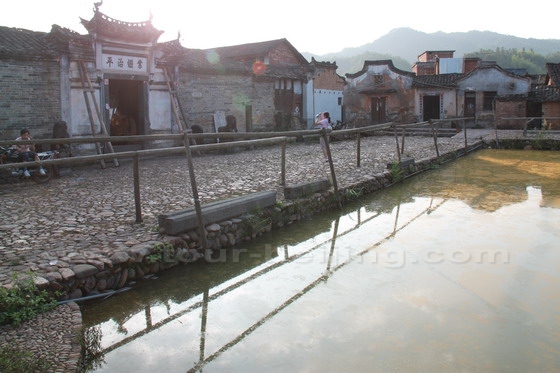
The inner gate of the Stately Home of Recepetion
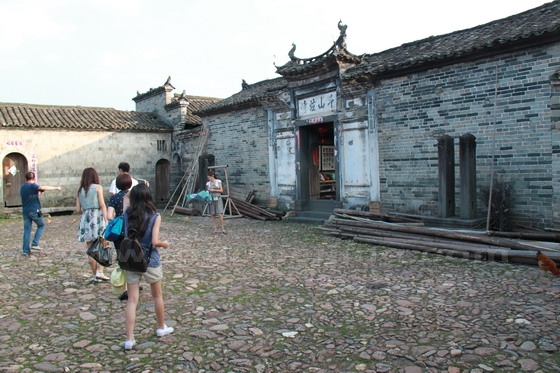
An old lady selling the local products
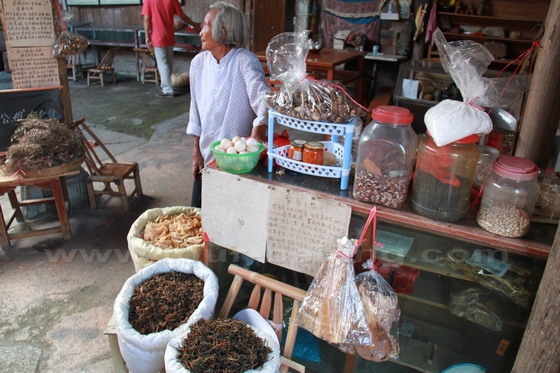
Catching small fishes in the ditch
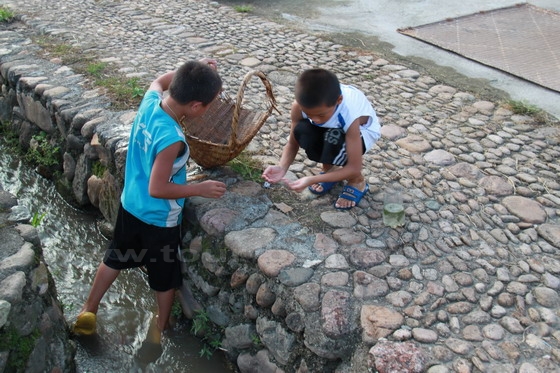
A good helper
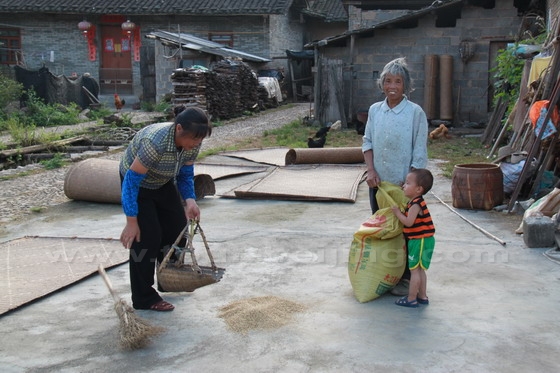
Peitian Village Travel Tips
1. Entrance fee: RMB 50
2. Enquiry Tel: 0597 – 8388998
3. Complaint Tel: 0597 – 8921895
4. Assistance tel: 0597 – 8388095
5. Liancheng Tourism Bureau Tel: 0597 – 8921895
6. 100km northeast of Longyan City
7. 300km northeast of Xiamen city
Hassle-free Fujian Guided Tours
If you don’t want to go the do-it-yourself route and prefer the hassle-free escorted tours, here are some options for Fujian guided tours:
Fujian Tour
Xiamen Tour
Wuyishan Tour
Fujian Tulou Tour
Xiamen Yongding Tulou One Day Tour
Wuyi Mountain 3 Days Tour
Xiamen Quanzhou Putian Meizhou Island Fuzhou Wuyishan 8 Day Tour
Further Readings
Top 10 Attractions in Fujian
Top 10 Attractions in Xiamen
Top 10 Attractions in Wuyishan
Jiqinglou, Chuxi Tulou Cluster
Chengqilou, Gaobei Tulou Cluster
Zhengchenglou, Hongkeng Tulou Cluster
Peitian Village in Fujian
Any questions,just drop a line.





